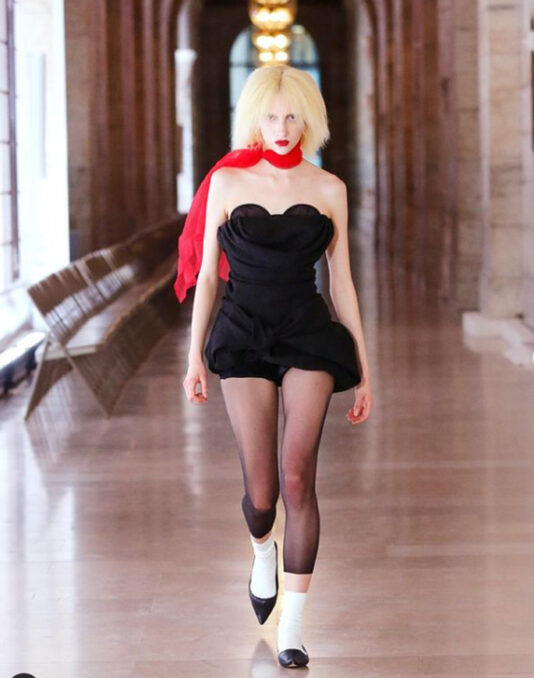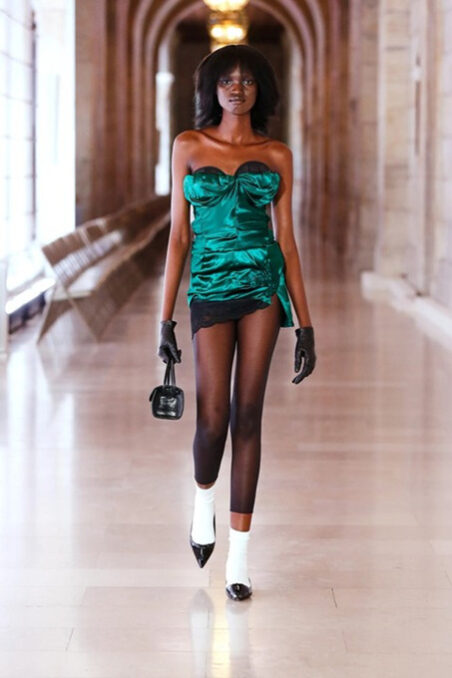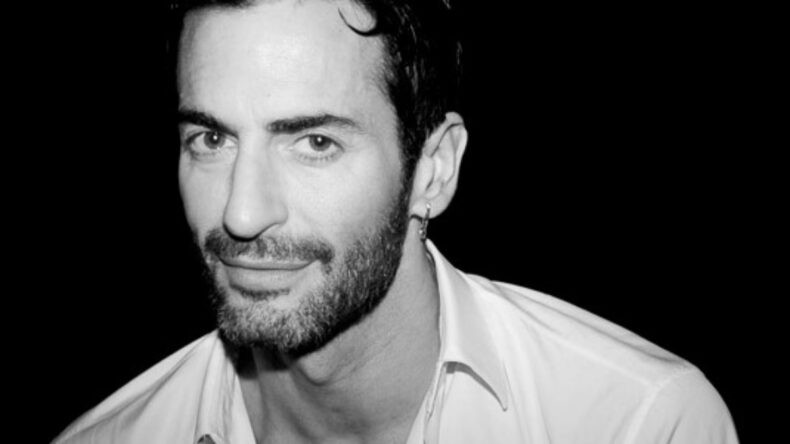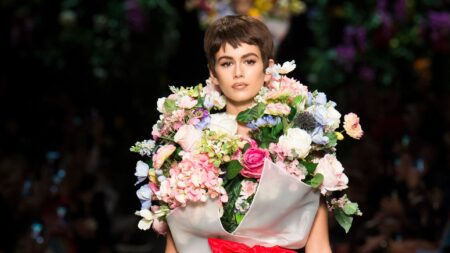The renowned fashion designer Marc Jacobs has transformed from a downtown darling to a respected New York fashion icon. Through his departure from the show hamster wheel and the growth rate, Jacobs has embraced his own schedule, unveiling runway collections sold exclusively at Bergdorf Goodman. His recent shows have become reflections on the influence of Vivienne Westwood, exploring the relationship between couture and streetwear, and delving into profound philosophical questions about the modern condition.
In his latest show at the New York Public Library, Jacobs presented a three-minute meditation on the impact of our digital lives and the impending future of artificial intelligence (A.I.). The brevity of the show itself, lasting only three minutes, became a powerful commentary on our abbreviated attention spans. Thirty seconds for the models to march in one direction, another thirty seconds for them to regroup backstage, and an additional thirty seconds to march out again in the opposite direction. The audience was left scratching their heads and giggling, realizing that was it. Jacobs redefined fast fashion in his own unique way.
The show cleverly highlighted how quickly we consume imagery and ideas in an era where our minds are constantly caught in the endless scroll of digital content. It was said that the audience members hadn’t even taken out their phones before the entire spectacle was over, challenging the notion of instant gratification and the fleeting nature of our online interactions. Jacobs demonstrated his conceptual ambition, surpassing his past endeavors such as constructing a train in the Louvre.

Amidst an industry where fashion collections have grown increasingly bloated, with dozens of models, elaborate sets, celebrity front rows, and live music, Jacobs took the opposite route. His show notes, usually filled with whimsical descriptions to explain the collection’s inspiration, were even written by ChatGPT, an artificial intelligence. The descriptions attempted to capture the collection’s essence but fell short in capturing its true spirit. The runway showcased a myriad of abbreviated swathed and scrunched prom dresses, striped power-shoulder pantsuits over constructivist lingerie, and featured flat pointed slippers with sheer black tights and white socks, emphasizing practicality without compromising sophistication. The dominant black and white palette was occasionally complemented by emerald and lamé, creating an overall celebration of individuality and timeless style reminiscent of 1980s club kids.

One can’t help but wonder what the A.I., ChatGPT, would have recommended for a successful show in our attention-deficit environment. Would it have advised an even shorter presentation? Or perhaps a spectacle incorporating prevailing trends, celebrity appearances, and slow-paced models? Jacobs opted for a route that defied expectations, breaking all the rules and eliciting laughter from his audience, prompting them to question their own conditioned responses. As the attendees left the show, still smiling, they encountered anti-fur protesters passionately marching and shouting in front of the library, despite the absence of fur in the collection. This juxtaposition reminded us that even in a world influenced by technology and A.I., there remains an inherently human desire to express oneself and be heard.
Marc Jacobs continues to push the boundaries of fashion, not only through his creative designs but also through thought-provoking presentations. By challenging the fast-paced nature of the industry and critiquing our digital consumption habits, he sparks conversations about the evolving relationship between fashion and technology. As Jacobs defies conventions and leaves his audience with a smile, he reminds us that amidst the ever-changing landscape, the human spirit and the desire to challenge the norm endure.













